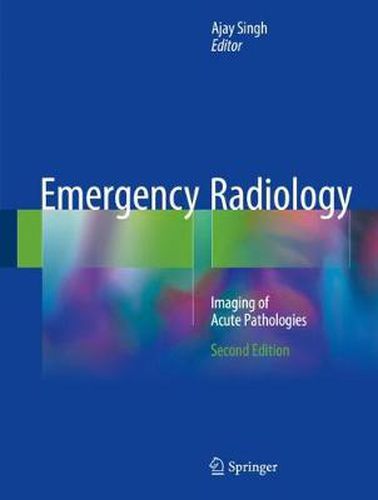Readings Newsletter
Become a Readings Member to make your shopping experience even easier.
Sign in or sign up for free!
You’re not far away from qualifying for FREE standard shipping within Australia
You’ve qualified for FREE standard shipping within Australia
The cart is loading…






In the emergency and trauma setting, accurate and consistent interpretation of imaging studies are critical to the care of acutely ill and injured patients. This book offers a comprehensive review of acute pathologies commonly encountered in the emergency room as diagnosed by radiologic imaging. It is organized by anatomical sections that present the primary ER imaging areas of the acute abdomen, pelvis, thorax, neck, head, brain and spine, and osseous structures. For each section, the common diagnoses are concisely described and are accompanied by relevant clinical facts and key teaching points that emphasize the importance of radiologic interpretation in clinical patient management. The role of modalities such as plain radiography, computed tomography, ultrasound, magnetic resonance imaging, and nuclear medicine imaging in managing emergency conditions is highlighted. The Second Edition is thoroughly updated and includes over 400 images and multiple choice questions in each chapter. Emphasizing the core concepts in emergency radiology, this book is a valuable resource for radiologists, residents, and fellows.
$9.00 standard shipping within Australia
FREE standard shipping within Australia for orders over $100.00
Express & International shipping calculated at checkout
In the emergency and trauma setting, accurate and consistent interpretation of imaging studies are critical to the care of acutely ill and injured patients. This book offers a comprehensive review of acute pathologies commonly encountered in the emergency room as diagnosed by radiologic imaging. It is organized by anatomical sections that present the primary ER imaging areas of the acute abdomen, pelvis, thorax, neck, head, brain and spine, and osseous structures. For each section, the common diagnoses are concisely described and are accompanied by relevant clinical facts and key teaching points that emphasize the importance of radiologic interpretation in clinical patient management. The role of modalities such as plain radiography, computed tomography, ultrasound, magnetic resonance imaging, and nuclear medicine imaging in managing emergency conditions is highlighted. The Second Edition is thoroughly updated and includes over 400 images and multiple choice questions in each chapter. Emphasizing the core concepts in emergency radiology, this book is a valuable resource for radiologists, residents, and fellows.